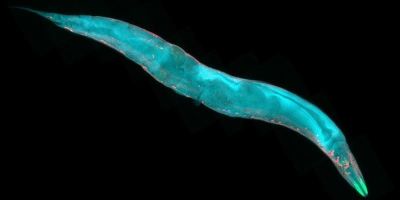Manufacturing project aims to take IT beyond the electronic age
A £5.2 million project led by the University of Leeds is aiming to transform data communications with a new generation of photonic microchips.
The Engineering and Physical Sciences Research Council (EPSRC) today announced funding for a multi-university research programme and a pilot manufacturing facility, to be based at Leeds, that will develop the materials needed for the new class of “photonic integrated circuits”.
The new technology relies on photons—the fundamental particle of light—rather than the flow of electrons in electronic circuits.
The project, which brings together researchers from the universities of Leeds, Sheffield, York and Cambridge, will use an advanced materials production technology developed at Leeds, called Ultrafast Laser Plasma Implantation (ULPI), to build the materials required for the new chips.
Professor Gin Jose, of the Institute for Materials Research in the University of Leeds’ Faculty of Engineering, said: “This is applied research; we are being funded as a manufacturing project. Many of the concepts have already been demonstrated in the lab and this backing will allow us to manufacture on a sufficient scale to prove the commercial readiness of the technology. This will allow Leeds to become the hub of this emerging technology.”
The EPSRC is providing £2.5 million to fund the collaboration under its Manufacturing of Advanced Functional Materials programme. A separate £1.2 million equipment grant from the EPSRC will pay for an ULPI manufacturing facility at Leeds. The rest of the funding will be provided by the participating universities and its 11 industrial partners.
ULPI uses high-powered, short-pulsed lasers to generate highly energetic plasma from a target material that is then implanted into another material. It can, for instance, implant a target glass with erbium— the ion largely responsible for high speed Internet—into silica glass. This creates a modified surface layer with markedly different properties to its individual components.
Professor Jose explained: “The laser is delivering a large amount of energy to the target material. This rips apart its atomic structure and forms a visible glowing plasma that explodes off the surface in a powerful aerosol-like effect and is implanted into the material we are trying to enhance. We are pushing the materials science to the extreme and creating new materials with multiple functionalities.”
The ULPI process has many other potential applications, including toughening mobile phone displays, building functional glasses for use in new types of biosensors, and creating novel anti-counterfeiting technology to protect products.
The pilot manufacturing facility at Leeds will be capable of manufacturing at a significant scale. For instance, functional glass for a biosensor could be produced at a rate of 4,000 units a day. Within four years, the facility is expected to be devoting about half of its capacity to commercial projects.
However, ULPI’s potential for developing the next generation of photonic integrated circuits will be project’s main focus.
Professor Thomas Krauss of the University of York, one of the partners, said: “By 2020, there will be about 50 billion Internet connected devices and, to handle this, we need faster, smaller and more efficient components. Integrated photonic chips offer a way around the problem, but the technology has been held back by the difficulty of amplifying the signal in photonic circuits and integrating a laser in silicon to power them.”
He added: “The current approach requires the bonding of different components and materials to form a single chip to do critical tasks like amplifying or splitting the light signal. However, this just hasn’t worked. ULPI offers a way of creating such photonic circuits within a single system at industrial scale and opens the door to finally realising the immense potential of photonics.”
The official acronym of the project is SeaMatics, which stands for Seamless Integration of Functional Materials for Advanced Photonics.
Further information
Contact: Chris Bunting, Senior Press Officer, University of Leeds; phone: +44 113 343 2049, mobile: 07712 389448 or email: c.j.bunting@leeds.ac.uk




